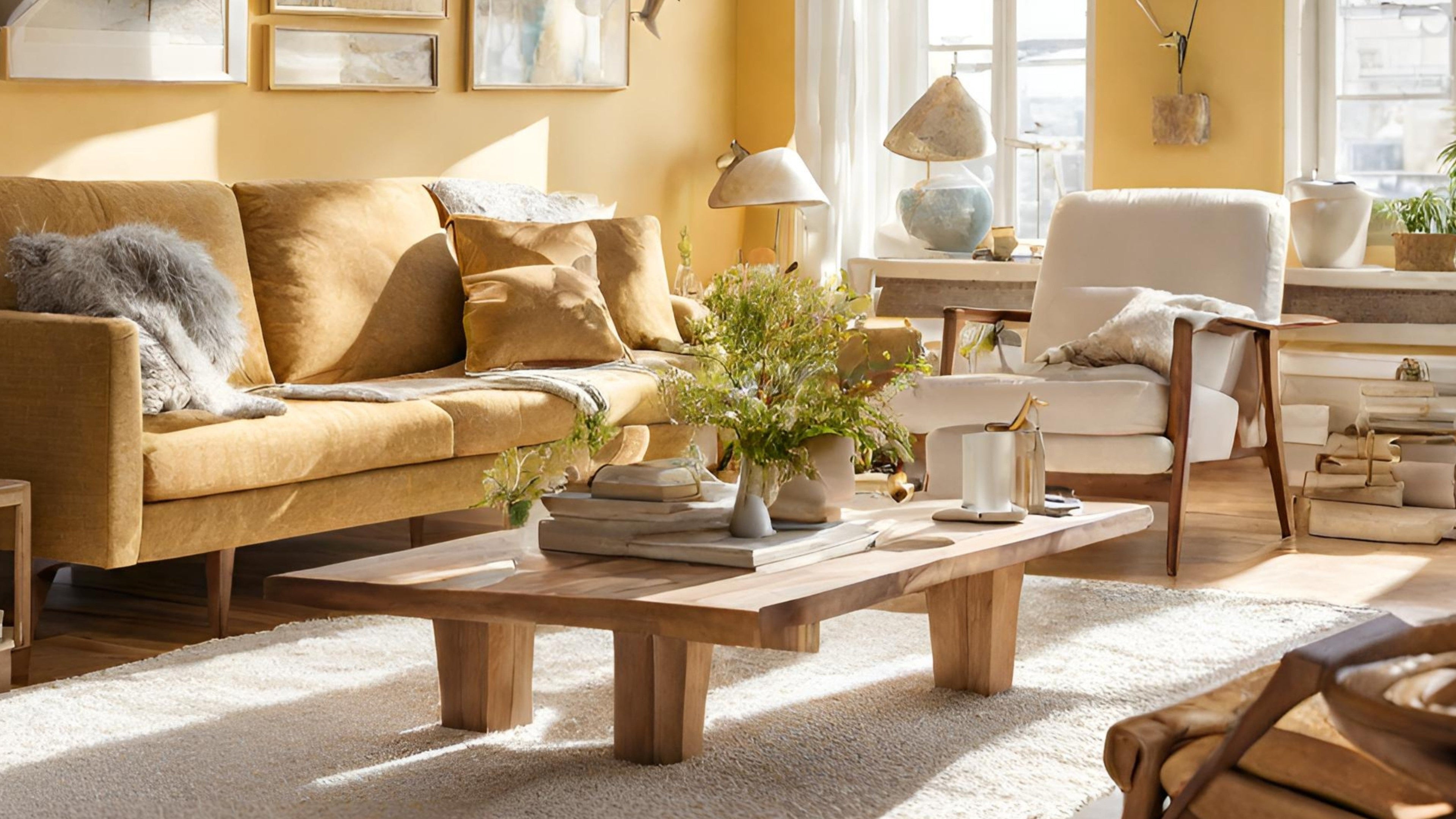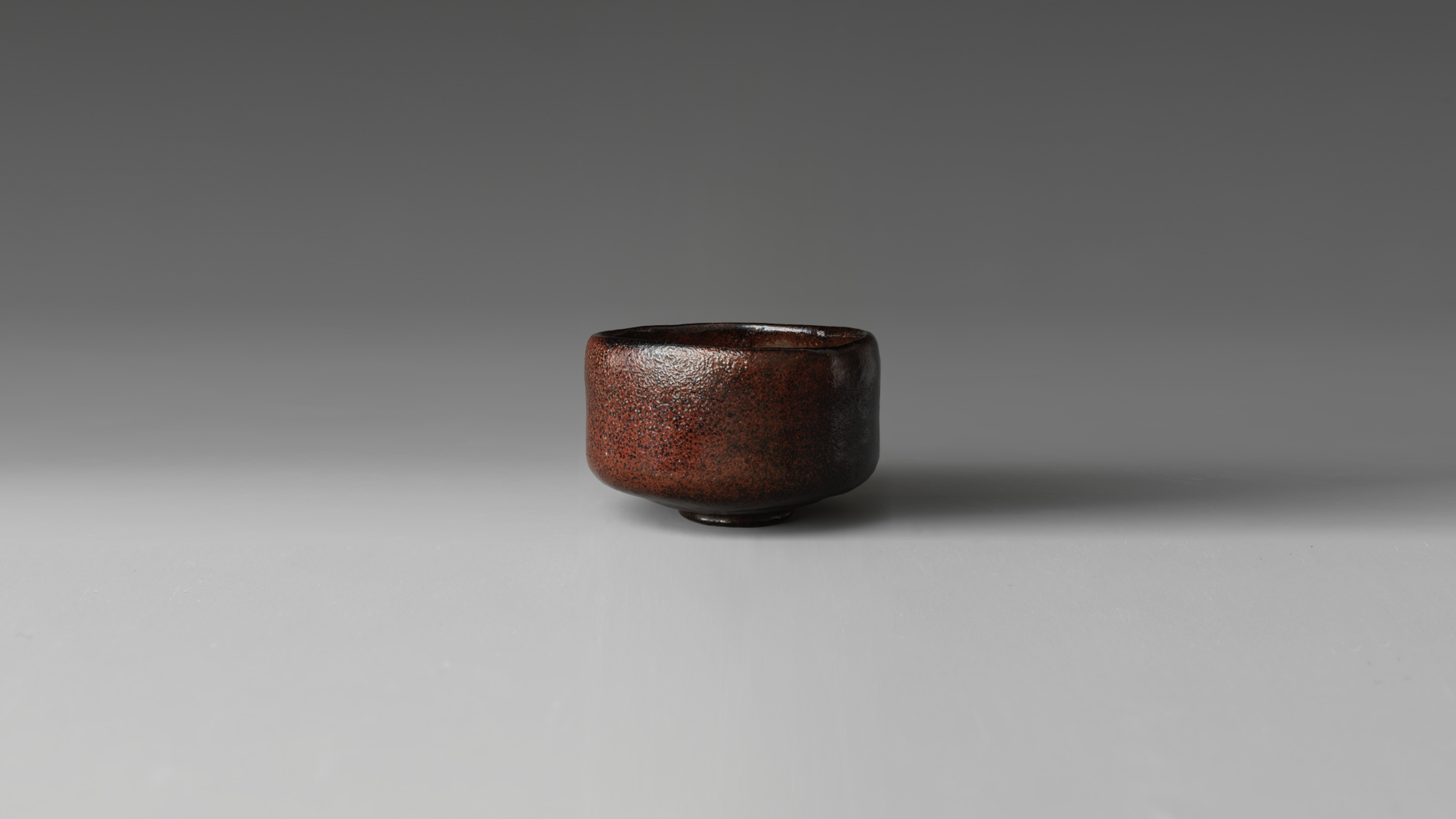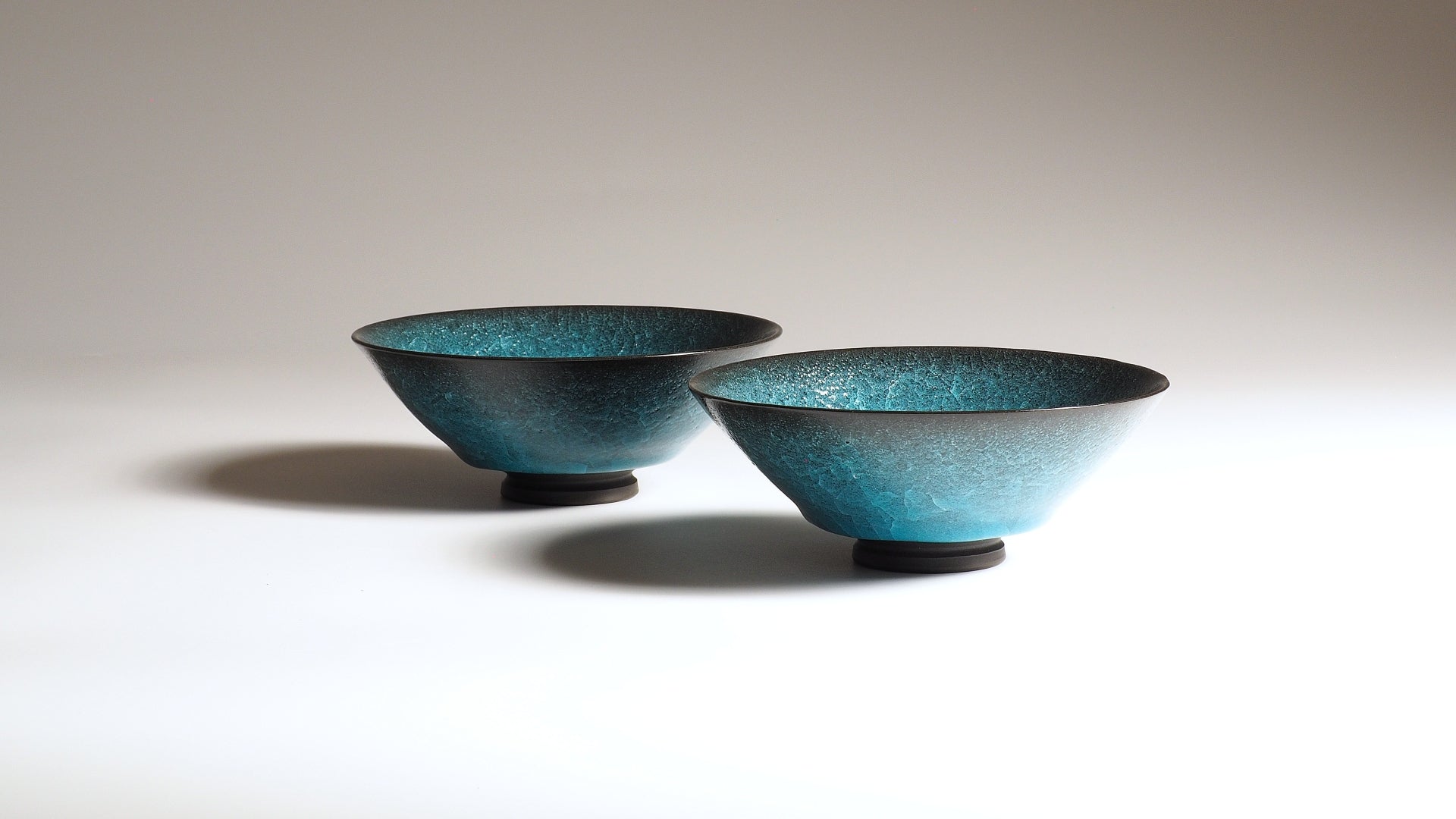
Biophilic Design: Bringing Nature and Calm into Daily Life
Biophilia is our natural pull toward the living world, and biophilic design is how we translate that instinct into the places we live and work.
It’s the same instinct you feel instantly when you walk through tall trees or pause beside a garden bed, a sense of calm and belonging that slips away so easily in the middle of noisy streets and fluorescent-lit offices.
That’s where biophilic design comes in.
It isn’t only about looks; it’s about weaving natural pieces into everyday life so that bond doesn’t fade.
A linen cushion that softens a wooden bench, a ceramic mug that feels warm between your hands, even sunlight spilling gently across the floor. All of these details bring nature back inside.
In the next sections, we’ll see how biophilic design can be incorporated into daily living and, little by little, support our sense of calm and well-being.
Rediscovering Calm in a Digital World
Modern life leaves little space for stillness.
We jump from emails to errands, and by evening we’ve forgotten what silence even sounds like.
Biophilia, through the simple act of adding natural elements back into our spaces, offers us small chances to rediscover calm, like noticing sunlight across a desk or the weight of a wooden bowl in hand.

Detail of a wooden plate made from Tochi wood (Japanese Horse Chestnut)
Living in a digital world that disconnects us from nature
These days, when time always feels short, it’s easy to drift through the day glued to our screens. Phones buzz, smartphones call for our attention, and hours vanish without a single glance at the green of leaves or the sound of wind in the trees.
The pull of the digital keeps us out of step with nature and the slower rhythms it provides, which our bodies and minds truly need.
Without natural textures and colors, or even a breath of fresh air, we’re left with a quiet emptiness, a nagging sense that something important is missing. And honestly, isn’t it?
How the natural world restores harmony
Yet the natural world is always there, quietly waiting to restore a bit of balance.
According to a 2020 study by the European Centre for Environment and Human Health at the University of Exeter Medical School, even just a few quiet minutes surrounded by greenery can ease stress, lower blood pressure, and help clear the mind.
Picture walking beneath tall pines, breathing in the damp scent of moss, or watching sunlight scatter across moving water. Moments like these remind us what it feels like to be grounded.
So, nature isn’t just an accessory in our lives but a vital force that helps us reset and find balance, bringing a sense of clarity and steadiness when the pace of daily life becomes overwhelming.
Biophilia as a way to bring that harmony back home
This is where biophilic design steps in but first let’s pause for a second on the word biophilia. It comes from the Greek bios meaning life and philia meaning love or affection, so at its heart it means “love of life”.
Biophilic design is about inviting that love of the natural world back into our homes in ways that feel simple yet meaningful. It isn’t about filling spaces with more stuff or chasing trends, but about choosing thoughtful details that draw us closer to the earth.
A wooden chair that feels warm beneath your hand, a ceramic cup steady and smooth to the touch, a leafy plant by the window catching morning light. These small acts may be humble, but they bring presence. They remind us that objects carry more than function, they keep our connection to something larger than ourselves.
Nature at the Table, Subtle and Present
The table is where nourishment and connection happen every day.
By bringing natural elements into this space, we allow meals to become mindful moments instead of rushed tasks.
The quiet role of wood and clay in Biophilic design
Incorporating nature into our everyday life doesn’t have to be difficult.
Let’s start with the dining table, for example. It is more than a place to eat, it becomes a daily setting where textures, colors, and materials speak quietly.
Choosing to serve meals in pottery bowls and using wooden utensils instead of cold metal can turn ordinary routines into moments of presence and subtle connection to nature.
The fine grain of a natural wood plate, with its irregular lines, or the earthy, firm surface of a handmade pottery bowl offers a sensory link to the earth.
Unlike plastic or steel, these natural elements carry warmth, character, and history so that each touch or sip feels like a conversation with nature itself.

Pottery Matcha bowl with bamboo utensil. Image by Mirko Stödter.
Minimalism as space for nature to breathe
Minimalism can amplify the sense of nature we aim to achieve with biophilic design.
A cluttered table, for example, overwhelms the senses and leaves no space for detail. By contrast, a simple layout allows the natural qualities of tableware to breathe. The gentle curve of a handmade cup, the faint swirl inside a ceramic bowl, or the quiet gloss of lacquer emerge more vividly when nothing competes for attention.
Japanese minimalism, in its different expressions from wabi-sabi to Japandi, shows how simplicity enhances one’s sense of calm and stillness. Here, minimalism is not seen as emptiness in the negative sense of the word but as an intended state of natural quiet.
Daily interactions that subtly reconnect us with nature
Daily rituals are where it all becomes personal.
In the morning, lifting and noticing the texture of a wooden cup filled with your favourite mix of oats, yogurt, and berries can set a calm tone for the day.
Later in the day, eating from handcrafted pottery plates with their slight imperfections turns an ordinary dinner into a pause that feels mindful.
These small acts may look trivial at first, but they build on each other. Bit by bit, they create a rhythm that pulls us back toward the natural world and in that rhythm, quiet serenity finds its way into our homes and into us.
Patterns and Textures in Biophilic Design
Biophilia reminds us that patterns, textures, and natural variations are more than decoration. They echo the rhythms of the living world, making spaces feel alive and grounding us in comfort and authenticity.
Floral motifs, earthy hues, and hand painted details
Patterns found in nature have long been mirrors of calm.
A plate painted with soft Sakura blossoms, a teacup shaded in earthy browns, or a bowl finished in deep greens speaks of seasons and landscapes.
These designs do more than decorate, they align the atmosphere of a room with the rhythm of the natural world.
In Japanese culture, natural motifs are often incorporated into crafts like tableware or ornaments as a way to create a deep connection with nature.
Besides the well-known Sakura (桜 – Cherry Blossoms), by far the most popular, other designs and patterns such as Ume (梅 – Plum Blossoms), Momiji (紅葉 – Autumn Leaves), as well as Bamboo and Chrysanthemum decorations, constantly serve as subtle reminders of this bond with nature.

A finely hand-decorated pottery plate crafted by Nunobiki Pottery, showcasing a distinguished example of the Sakura motif, a hallmark of traditional Japanese ceramics.
Warm textures that evoke comfort and calm
Texture is equally powerful.
Smooth glass can feel cold and distant, while the subtle irregularities of wood or clay invite touch.
Running your hand along the rough grain of wood or tracing the spiral of glaze on pottery brings an instant sense of warmth and comfort.
Holding a wooden cup, for example, offers a pleasant softness and a steady warmth (and it insulates surprisingly well, keeping drinks at just the right temperature). These small tactile encounters invite us to slow down, to notice what we’re touching, and to remain present in the moment.
Natural variation that feels alive, not manufactured
Then there is natural variation, the kind no machine can ever replicate.
A swirl of color in a bowl, a ripple in the grain of wood, a knot that shifts its shade, or the tiny mark left by a craftsman’s hand.
These details signal authenticity, a real connection to nature that stands in sharp contrast to the cold perfection of mass production. They remind us that life itself is imperfect, alive, and always changing.
Far from flaws, they are signs of vitality, traces that bring warmth and honesty into the objects we hold every day.
How Biophilic Design Supports Mental and Emotional Wellbeing
Biophilic spaces don’t just look beautiful, they support emotional balance and mental clarity. Natural elements soothe the senses and foster rituals that ease stress.
Lower sensory noise for a more restful lifestyle
Our minds and emotions are shaped by the spaces we live in, so when we surround ourselves with harsh lights or constant noise, restlessness creeps in almost without us noticing.
But try adding a few natural elements and notice how the pressure eases.
We’re not talking about a complete redesign of your environment, as even a small change can make a difference.
Place a plant in your house, let the room breathe, then look for the muted tones of wood, the soft touch of linen, or the irregular curve of handmade pottery to create a calm your body recognizes instinctively.
Living Biophilic Design in Everyday Rituals
Biophilic design allows us to experience nature even in the smallest actions of daily life.
Walking barefoot on a wooden floor brings an instant sense of grounding and swapping a plastic cutting board for a Hinoki wood one (that is also naturally antibacterial and free from microplastics) with its gentle citrus aroma, makes cooking feel closer to nature.
Try brewing tea in a clay pot or eating from pottery plates to transform ordinary meals into mindful pauses.
You can even go further and plant some basil on your balcony, or begin shaping a bonsai, and you’ll notice how each gesture quietly encourages you to slow down. These choices may seem minor, but together they create a steady rhythm of calm that restores balance to everyday life.

Growing a bonsai offers a refined way to introduce nature into your home decor.
Image by Luca Finardi.
When Biophilic Design Meets Quiet Luxury
Quiet luxury emerges when nature and craftsmanship meet. It values authenticity over excess, highlighting the artistry of handmade pieces and natural materials.
Natural Materials and Craft as Quiet Luxury
Quiet luxury is elegance grounded not in excess but in authenticity.
Picture a bowl shaped from Shigaraki clay, fired with techniques refined over centuries, or a plate carved from Tochi Wood (Japanese Horse Chestnut) where each ring in its grain quietly marking the passage of time. These pieces are precious not because they’re rare trophies, but because they carry the depth of nature into our homes (and into our hands).
What makes them truly special is the craft behind them. Handmade tableware requires time, patience, and skill, and no two pieces are ever the same. Each one offers a sense of intimacy that mass production can’t match. To hold such an item is to feel the presence of both artisan and earth, a quiet meeting point between human intention and natural form.
How Japanese tableware fits naturally into biophilic living
Japanese tableware fits seamlessly into this vision. Rooted in minimalism, guided by seasonal awareness, and defined by natural motifs, it embodies biophilic design principles effortlessly.
A rustic tea bowl, a smooth lacquer tray, or a hand painted dish are not only practical, they are living expressions of balance.
In this sense, biophilia and quiet luxury are not separate ideas but two voices in harmony, reminding us that true refinement is found in nature’s embrace.
Everyday Calm in Practice
The beauty of biophilic design lies in how it blends quietly into daily life. It isn’t about grand gestures but about the small choices that reconnect us with nature and restore balance to ordinary routines.
A wooden bowl at breakfast, a ceramic cup for evening tea, or a corner left open for natural light are simple details that bring the outside world back in. Each carries a sense of presence and reminds us of our bond with the natural world.
The idea is simple: not more, but better. Instead of filling rooms with excess, biophilic design invites us to choose fewer elements, each rooted in craft and authenticity. The result is a calmer pace, a shift that makes room for reflection in a world that often runs too fast.
Over time, these small decisions gather meaning. They nurture both home and heart, offering a connection with nature that no screen or tool can replace. From here, it feels natural to move toward the questions people most often ask about biophilia and design.
FAQs about biophilic design
Here are some of the most common questions related to biophilic design.
What is biophilic design?
Biophilic design is the practice of weaving natural elements into our living spaces, from wood and clay to light and greenery, so our homes reflect our innate connection to nature.
Is biophilic design only about plants?
Not at all.
Plants help, but so do wood, stone, clay, natural fabrics, and even sunlight. It’s about any detail that reconnects you with nature.
How does biophilic design improve wellbeing?
By lowering sensory stress, creating calmer rhythms, and inviting presence. Natural textures and light ease the mind and help the body feel grounded.
How does Japanese tableware fit into biophilic design?
Japanese tableware, often handmade from clay or wood, brings nature to the table in subtle, beautiful ways. Every piece carries texture and imperfection that remind us of the living world.
What role do colors, textures, and patterns play in biophilic design?
A: They echo the rhythms of nature. Earthy hues, warm textures, and organic patterns create spaces that feel alive, inviting comfort and authenticity.
How can I start adding biophilic design at home?
A: Begin small. Add a plant, use a wooden bowl at breakfast, or let natural light fill a corner. These little steps slowly create a more calming environment.
Are handmade pieces durable for daily use?
Yes. With proper care, handmade wood and pottery are strong enough for daily rituals. Their durability is part of what makes them meaningful.
Why is biophilic design considered a form of quiet luxury?
Because it values authenticity over excess. Instead of chasing abundance, it treasures simple, well-crafted pieces that bring nature and calm into daily life.



